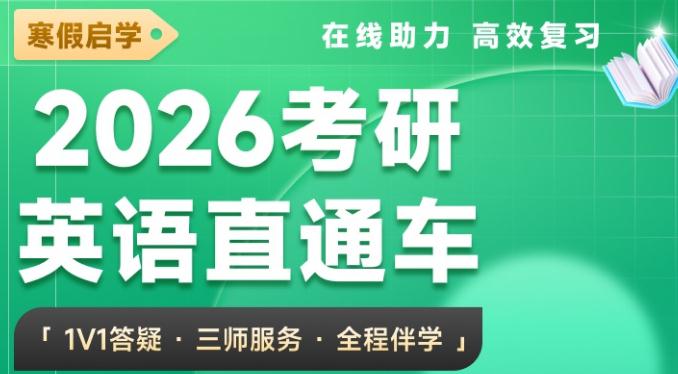1998-2022 ChinaKaoyan.com Network Studio. All Rights Reserved. 沪ICP备12018245号
北京工业大学环能学院环境科学与工程导师介绍:彭永臻
一、基本情况
彭永臻:男,工学博士,博士生导师。现任北京工业大学环境科学与工程学科首席教授(兼任哈尔滨工业大学博士生导师),环境工程系主任兼水污染控制室主任。1981年作为我国首批硕士研究生毕业于哈尔滨工业大学。1993年破格晋升为教授,1996年评为博士生导师,先后获黑龙江省优秀中青年专家、获政府特殊津贴、“国家教学名师”、“全国模范教师”,“北京市人民教师提名奖”等称号。
现任中国城镇供水排水协会常务理事,中国环境科学学会环境工程分会副主任委员,《环境科学学报》副主编,《北京工业大学学报》副主编,《中国给水排水》、《给水排水》和《Frontiers of Environmental Science & Engineering in China》等9本杂志的编委。
主要研究方向是污水生物处理及其自动控制与智能控制、污水脱氮除磷的新工艺与新技术。先后获得了20余项省部级以上科技进步奖和优秀教学奖,其中包括国家科技进步二等奖1次,省部级科技一等获奖3次。领导的教学团队于2007年被评为首批“国家级教学团队”,负责的《水质工程学》和主讲的《环境保护概论》先后获国家精品课程。主编与参编了3本全国统编教材和7本专著,发表论文400余篇,其中SCI检索的论文120余篇。获得发明专利授权30余项。指导的博士生中已有37人获博士学位,并于2005年和2006年连续2次获得“全国优秀博士学位论文”奖,另2次获“全国优秀博士学位论文”提名奖。
二、主要研究方向
污水生物处理的理论与应用、污水处理系统的自动控制与智能控制、污水脱氮除磷的新工艺与新技术。
三、主要在研课题
1.“十一五”国家科技支撑计划重点项目--SBR工艺城市污水处理厂节能降耗关键技术(2006BAC19B03),(2007.1-2010.12)。
2.“十一五”重大科技专项课题(编号:2008ZX07317-007-105)--景观河湖水环境管理与水体补水保障研究(2009.1--2011.12);
3.国家“十一五”重大科技专项课题--污水厂尾水作为城市河湖景观补水的深度脱氮除磷技术(2008.9--2010.12);
4.国家“863计划”项目--活性污泥微膨胀节能理论与方法及中试研究(2006AA06Z319),(2007.1-2009.12)。
5.北京市教委科研基地--科技创新平台项目---污水脱氮除磷新理论与新工艺及节能降耗关键技术,(2008.1-2010.12)
6.北京市自然科学基金重点项目(8091001)--城市垃圾渗滤液生物处理及短程生物脱氮新技术,(2009.1--2011.12);
7.北京市高校人才强教深化计划高层次人才资助项目(编号:PHR20090502)--污水脱氮除磷新理论与新工艺及节能降耗关键技术(2009.1--2011.12);
8.国家自然科学基金---海外青年学者合作研究基金项目(50628808)--聚磷菌和聚糖菌在强化生物除磷系统中竞争机理与控制,(2007.1-2009.12);
9.新加坡环境与水工业协会创新发展项目(EDBS07/1-53974092)--低溶解氧污泥微膨胀节能理论与方法研究。
10.新加坡环境与水工业发展协会项目(EDBS07/1-53974092)--CSBR过程控制及强化脱氮除磷研究。
四、科研工作
已主持了9项国家自然科学基金和2项教育部优秀年轻教师基金等30多项国家与省部级科研项目,目前正主持国家自然科学基金重大国际合作项目、国家“863”项目和国家“十一五”科技支撑项目等科研项目。先后获得获得了20余项省部级优秀教学成果奖和科技进步奖,2004年和2009年2次获得国家科技进步奖二等奖。
2006-2014年主要代表论文如下:
1.G. B. Zhu, S. Y. Wang, W. D. Wang, Y. Wang, L. L. Zhou, B. Jiang, H. J. M. Op den Camp, N. Risgaard-Petersen, L. Schwark, Y. Z. Peng, M. M. Hefting, M. S. M. Jetten,C. Q. Yin.Hotspots of anaerobic ammonium oxidation at land-freshwater interfaces.Nature Geoscience,2013,6(2):103-107.
2.D. W. Gao, Y. Z. Peng,W. M. Wu.Kinetic Model for Biological Nitrogen Removal Using Shortcut Nitrification-Denitrification Process in Sequencing Batch Reactor.Environmental Science & Technology,2010,44(13):5015-5021.
3.S. Y. Wang, G. B. Zhu, Y. Z. Peng, M. S. M. Jetten,C. Q. Yin.Anammox Bacterial Abundance, Activity, and Contribution in Riparian Sediments of the Pearl River Estuary.Environmental Science & Technology,2012,46(16):8834-8842.
4.Q. Yang, X. H. Liu, C. Y. Peng, S. Y. Wang, H. W. Sun,Y. Z. Peng.N2O Production during Nitrogen Removal via Nitrite from Domestic Wastewater: Main Sources and Control Method.Environmental Science & Technology,2009,43(24):9400-9406.
5.Q. Yang, Y. Z. Peng, X. H. Liu, W. Zeng, T. Mino,H. Satoh.Nitrogen removal via nitrite from municipal wastewater at low temperatures using real-time control to optimize nitrifying communities.Environmental Science & Technology,2007,41(23):8159-8164.
6.X. Li, Y. Peng, N. Ren, B. Li, T. Chai,L. Zhang.Effect of temperature on short chain fatty acids (SCFAs) accumulation and microbiological transformation in sludge alkaline fermentation with Ca(OH)(2) adjustment. Water Research,2014,61(34-45.
7.S. J. Ge, Y. Z. Peng, S. Qiu, A. Zhu,N. Q. Ren.Complete nitrogen removal from municipal wastewater via partial nitrification by appropriately alternating anoxic/aerobic conditions in a continuous plug-flow step feed process.Water Research,2014,55(95-105.
8.J. H. Guo, Y. Z. Peng, Z. W. Wang, Z. G. Yuan, X. Yang,S. Y. Wang.Control filamentous bulking caused by chlorine-resistant Type 021N bacteria through adding a biocide CTAB.Water Research,2012,46(19):6531-6542.
9.Y. Ma, Y. Z. Peng, S. Y. Wang, Z. G. Yuan,X. L. Wang.Achieving nitrogen removal via nitrite in a pilot-scale continuous pre-denitrification plant.Water Research,2009,43(3):563-572.
10.Y. Z. Peng, S. J. Zhang, W. Zeng, S. W. Zheng, T. Mino,H. Satoh.Organic removal by denitritation and methanogenesis and nitrogen removal by nitritation from landfill leachate.Water Research,2008,42(4-5):883-892.
11.C. Y. Wu, Y. Z. Peng, S. Y. Wang,Y. Ma.Enhanced biological phosphorus removal by granular sludge: From macro- to micro-scale.Water Research,2010,44(3):807-814.
12.Y. Z. Chen, C. Y. Peng, J. H. Wang, L. Ye, L. C. Zhang,Y. Z. Peng.Effect of nitrate recycling ratio on simultaneous biological nutrient removal in a novel anaerobic/anoxic/oxic (A(2)/O)-biological aerated filter (BAF) system.Bioresource Technology,2011,102(10):5722-5727.
13.D. W. Gao, Y. Z. Peng, B. Li,H. Liang.Shortcut nitrification-denitrification by real-time control strategies.Bioresource Technology,2009,100(7):2298-2300.
14.S. J. Ge, Y. Z. Peng, S. Y. Wang, J. H. Guo, B. Ma, L. A. Zhang,X. Cao.Enhanced nutrient removal in a modified step feed process treating municipal wastewater with different inflow distribution ratios and nutrient ratios.Bioresource Technology,2010,101(23):9012-9019.
15.J. H. Guo, Y. Z. Peng, C. Y. Peng, S. Y. Wang, Y. Chen, H. J. Huang,Z. R. Sun.Energy saving achieved by limited filamentous bulking sludge under low dissolved oxygen.Bioresource Technology,2010,101(4):1120-1126.
16.J. H. Guo, Y. Z. Peng, S. Y. Wang, Y. A. Zheng, H. J. Huang,Z. W. Wang.Long-term effect of dissolved oxygen on partial nitrification performance and microbial community structure.Bioresource Technology,2009,100(11):2796-2802.
17.W. G. Jie, Y. Z. Peng, N. Q. Ren,B. K. Li.Utilization of alkali-tolerant stains in fermentation of excess sludge.Bioresource Technology,2014,157(52-59.
18.Y. Z. Peng,S. J. Ge.Enhanced nutrient removal in three types of step feeding process from municipal wastewater.Bioresource Technology,2011,102(11):6405-6413.
19.Y. Z. Peng, L. Zhang, S. J. Zhang, Y. P. Gan,C. C. Wu.Enhanced nitrogen removal from sludge dewatering liquor by simultaneous primary sludge fermentation and nitrate reduction in batch and continuous reactors.Bioresource Technology,2012,104(144-149.
20.Y. Y. Wang, Y. Z. Peng,T. Stephenson.Effect of influent nutrient ratios and hydraulic retention time (HRT) on simultaneous phosphorus and nitrogen removal in a two-sludge sequencing batch reactor process.Bioresource Technology,2009,100(14):3506-3512.
21.X. Yang, Y. Z. Peng, N. Q. Ren, J. H. Guo, X. X. Tang,J. C. Song.Nutrient removal performance and microbial community structure in an EBPR system under the limited filamentous bulking state.Bioresource Technology,2013,144(86-93.
22.J. H. Guo, Y. Z. Peng, S. Y. Wang, B. Ma, S. J. Ge, Z. W. Wang, H. J. Huang, J. R. Zhang,L. Zhang.Pathways and Organisms Involved in Ammonia Oxidation and Nitrous Oxide Emission.Critical Reviews in Environmental Science and Technology,2013,43(21):2213-2296.
23.J. F. Gao, Q. Zhang, K. Su, R. N. Chen,Y. Z. Peng.Biosorption of Acid Yellow 17 from aqueous solution by non-living aerobic granular sludge.Journal of Hazardous Materials,2010,174(1-3):215-225.
24.Y. K. Gong, Y. Z. Peng, Q. Yang, W. M. Wu,S. Y. Wang.Formation of nitrous oxide in a gradient of oxygenation and nitrogen loading rate during denitrification of nitrite and nitrate.Journal of Hazardous Materials,2012,227(453-460.
25.J. H. Guo, Y. Z. Peng, H. J. Huang, S. Y. Wang, S. J. Ge, J. R. Zhang,Z. W. Wang.Short- and long-term effects of temperature on partial nitrification in a sequencing batch reactor treating domestic wastewater.Journal of Hazardous Materials,2010,179(1-3):471-479.
26.J. Ma, Q. Yang, S. Y. Wang, L. Wang, A. Takigawa,Y. Z. Peng.Effect of free nitrous acid as inhibitors on nitrate reduction by a biological nutrient removal sludge.Journal of Hazardous Materials,2010,175(1-3):518-523.
27.Y. Z. Peng, J. H. Guo, H. Horn, X. Yang,S. Y. Wang.Achieving nitrite accumulation in a continuous system treating low-strength domestic wastewater: switchover from batch start-up to continuous operation with process control.Applied Microbiology and Biotechnology,2012,94(2):517-526.
28.Y. Z. Peng,G. B. Zhu.Biological nitrogen removal with nitrification and denitrification via nitrite pathway.Applied Microbiology and Biotechnology,2006,73(1):15-26.
29.J. H. Guo, Y. Z. Peng, X. Yang, C. D. Gao,S. Y. Wang.Combination process of limited filamentous bulking and nitrogen removal via nitrite for enhancing nitrogen removal and reducing aeration requirements.Chemosphere,2013,91(1):68-75.
30.C. Y. Wu, Y. Z. Peng, R. D. Wang,Y. X. Zhou.Understanding the granulation process of activated sludge in a biological phosphorus removal sequencing batch reactor.Chemosphere,2012,86(8):767-773.
31.L. Zhang, S. J. Zhang, Y. P. Gan,Y. Z. Peng.Bio-augmentation to rapid realize partial nitrification of real sewage.Chemosphere,2012,88(9):1097-1102.
32.L. Zhang, S. J. Zhang, S. Y. Wang, C. C. Wu, Y. G. Chen, Y. Y. Wang,Y. Z. Peng.Enhanced biological nutrient removal in a simultaneous fermentation, denitrification and phosphate removal reactor using primary sludge as internal carbon source.Chemosphere,2013,91(5):635-640.
33.W. T. Zhang, Y. Z. Peng, N. Q. Ren, Q. S. Liu,Y. Z. Chen.Improvement of nutrient removal by optimizing the volume ratio of anoxic to aerobic zone in AAO-BAF system.Chemosphere,2013,93(11):2859-2863.
34.Y. Ma, Y. Z. Peng,X. L. Wang.Improving nutrient removal of the AAO process by an influent bypass flow by denitrifying phosphorus removal.Desalination,2009,246(534-544.
35.Y. Z. Peng, X. L. Wang,B. K. Li.Anoxic biological phosphorus uptake and the effect of excessive aeration on biological phosphorus removal in the A(2)O process.Desalination,2006,189(1-3):155-164.
五、教材与专译著
1.彭永臻(主编)、崔福义编著,《给水排水工程计算机程序设计》,中国建筑工业出版社(1996);
2.崔福义,彭永臻,《给水排水工程仪表与控制》,中国建筑工业出版社(1999);
3.彭永臻主审,《水质工程实验技术》,黑龙江教育出版社(2000);
4.彭永臻(主编),崔福义编著,《给水排水工程计算机应用》,中国建筑工业出版社(2002),建设部“九五”重点立项教材(代码为JS018);
5.王淑莹,高春娣,《环境导论》,中国建筑工业出版社(2004)(主审)
6.李圭白,张杰,彭永臻,崔福义等,《水质工程学》,中国建筑工业出版社(2005);
7.崔福义,彭永臻,南军编著,《给水排水工程仪表与控制》,中国建筑工业出版社(2006);
8.Ma Yong,Peng Yongzhen,etc. Frontiers in Environmental Research,chapter 1“The Optimization and Control of Pre-denitrification Process to Improve Nitrogen Removal”,Nova Science Publishers of America (2006);
9.马勇,彭永臻著,《城市污水处理系统的运行与过程控制》,科学出版社,(2007),获2007年度国家科学技术学术著作出版基金;
10.王晓莲,彭永臻著,《A2O法污水生物脱氮除磷处理技术与应用》,科学出版社,(2009);
11.杨庆,彭永臻编著,《序批式活性污泥法原理与应用》,科学出版社,(2010);
12.吴昌永,王然登,彭永臻编著,《污水处理颗粒污泥技术原理与应用》,中国建筑工业出版社(2011);
13.彭永臻著,《SBR法污水生物脱氮除磷及过程控制》,科学出版社,(2011);
14.彭永臻著,郭建华编著,《活性污泥膨胀机理、成因及控制》,科学出版社,(2012)。
六、联系方式
E-mail:pyz@bjut.edu.cn;
Tel:010-67392627
来源未注明“中国考研网\考研信息网”的资讯、文章等均为转载,本网站转载出于传递更多信息之目的,并不意味着赞同其观点或证实其内容的真实性,如涉及版权问题,请联系本站管理员予以更改或删除。如其他媒体、网站或个人从本网站下载使用,必须保留本网站注明的"稿件来源",并自负版权等法律责任。
来源注明“中国考研网”的文章,若需转载请联系管理员获得相应许可。
联系方式:chinakaoyankefu@163.com
- 2026考研英语全程班 6班
- 权威高配师资亲授技巧,教研千锤百炼科学提分。直录播课相结合精讲互动二合一,专业团队精细化作文批改。讲练结合,随学随练稳步提升。支持试听~
- 主讲团队:王江涛、谭剑波、董仲蠡、许聪杰、陈志超、潘赟、郑艳彤、易熙人

扫码关注
了解考研最新消息












